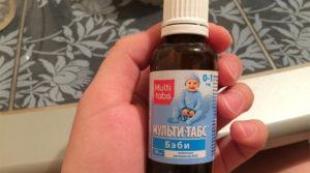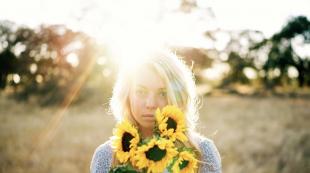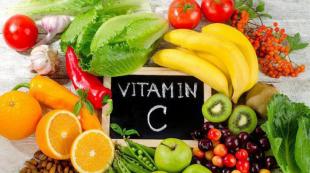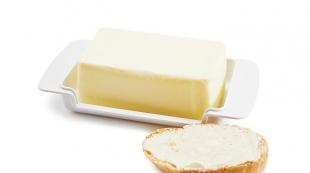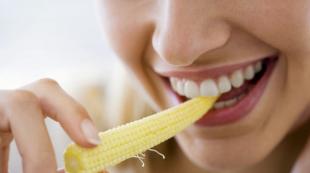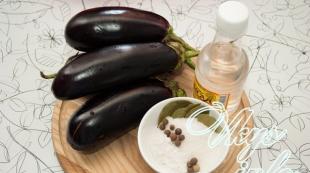Khlebny saved the history of the holiday and traditions. Why is nut spas called the third and bread
On August 29, the Third Savior is celebrated, which is also called the bread, nut, linen, Savior on the canvas. The Orthodox Church on this day celebrates the transfer from Edessa to Constantinople of the Image Not Made by Hands (Ubrus) of Jesus Christ.
There is such a legend about the Image Not Made by Hands. Edessa was ruled by King Abgar, who was ill with leprosy. Having learned about the miracles performed by the Savior, he decided to turn to Him for help. The governor wrote a letter to Jesus asking him to come and heal him. The painter Ananias was entrusted to take the letter, who was asked to depict the face of Christ if the Lord could not personally come to Edessa.
Arriving in Jerusalem, the painter found Christ surrounded by people. Christ Himself called Ananias, who handed Him a letter and conveyed the request of the emperor. Seeing that the painter was unable to paint His portrait, the Savior asked to bring water and an ubrus (towel). Jesus washed his face and wiped it with a towel, on which the Divine face was imprinted.
Ananias carried the ubrus to Edessa and handed it to Avgar, who, having wiped his face with it, was healed. Later, the Apostle Thadeus came to Edessa. He baptized King Abgar and his entire family, as well as many residents of the city who believed in Christ. Ubrus was fortified at the entrance to the city. In 944, the emperor Constantine Porphyrogenitus bought the shrine and moved it to Constantinople.

Walnut Spas: traditions and customs of the holiday
The hostesses began to prepare for the celebration of the Third Savior the day before. In the evening they put a dough in order to bake a loaf of flour from the new harvest early in the morning. Hence the other name of the holiday - Khlebny Savior. The name "nut" appeared due to the fact that by this time nuts were ripening, which in Russia were considered a symbol of wealth and prosperity. In the old days, they believed that if you carry a nut with you - a double or triple (two or three nuts on one branch), then you will never have to experience a lack of money. From August 29, they began to collect nuts and prepare them for the winter. The collection could last several days. A rich walnut harvest foreshadowed a good rye harvest next year.
In honor of the Image Not Made by Hands, the holiday was also called "The Savior on Canvas", "The Savior on the Canvas", "Canvas Savior". In the village of Zelenye Gory (Nizhny Novgorod region), a fair was held that day, where they traded in various fabrics. Hence the well-known saying: The First Spas - they stand on the water, the Second Spas - they eat apples, the Third Spas - they sell canvases on the green mountains».
Among the people, the Third Spas was considered a semi-holiday. It was celebrated mainly by women. After that day, they began to sow winter bread. In the old days, the housewives escorted their husbands to the fields with bread and salt. Three sheaves were placed on the cart, and on them were sacks of rye intended for sowing. The sower was met on the field by guys with a pie and buckwheat porridge. Then these treats were eaten by the whole family.
On this day, they thought about the timing of sowing spring crops. For this, grains were taken from three spikelets of a dozhin sheaf and buried in the field in three different places. Then they noted: “If the grains from the first ear come in earlier and better, then the sowing should be early, the second - medium, the third - late.”
Even on the Third Spas, healing springs were cleaned, new wells were blessed, underground water was drunk, and wells were circled, as if closing the warm time.

Signs, superstitions and sayings for the Third Spas
- The Third Savior has stored up bread.
- The Third Spas is a holiday for all holidays (the harvest is harvested, you can set a rich table).
- If cranes flew to the Third Savior, then under
Holiday in August. Walnut Spas or, as it is also called, Bread Spas, marks the harvest of the last harvest.
Nut Spas, like the first two - Honey and Apple, an ancient holiday that united all Christian and folk traditions, so the third Spas was considered a day of thanksgiving to the Lord for the harvest of bread and nuts.
The Third Spas is called Nut because from that day on you can eat nuts. It is not as popular as the previous two, but of all three, it is the most important.
Before the Nut Savior, the Assumption of the Most Holy Theotokos (August 28) and the completion of the Assumption Fast, which lasts two weeks - from August 14 to 27, are celebrated.
history of the holiday
According to legend, at this time in the Syrian city of Edessa, Abgar ruled, who was stricken with leprosy all over his body. The rumor about the great miracles that the Lord Jesus Christ worked reached Syria and Abgar. Not seeing the Savior, but believing in Him, Avgar sends him a letter with a request for healing and sends his painter Ananias to deliver the letter and draw the Image of the Lord.
Arriving in Jerusalem, Ananias could not approach the Savior in any way because of the huge number of people who surrounded the Lord and listened to his sermons. Then he stood on a stone and decided, looking from a distance, to draw the Image of Jesus Christ, but he did not succeed, the Divine light emanating from the Lord blinded the artist.
The Savior Himself called Ananias, calling him by name, gave Abgar a short letter and promised to send His disciple for instruction in salvation. The Lord also asked for water and ubrus (canvas). Having washed himself, he put the veil to his face - and His Divine Face was reflected there.
Ananias brought the Icon and a letter from the Savior to the ruler. Having reverently accepted the Great Holy Icon, Abgar received healing, and only a small part of the disease remained on his face until the arrival of the apostle.
 Photo: sputnik-georgia.ru
Photo: sputnik-georgia.ru The apostle who arrived in Edessa was Saint Thaddeus, who baptized Abgar and all the inhabitants of Edessa. The miraculous image of the Savior was installed in a niche above the gates to the city. And everyone who passed into the city worshiped Him.
This went on for many years, until one of Abgar's great-grandsons fell into idolatry, and he had a desire to remove this Image from the city gates. But the bishop of Edessa had a vision of the Lord to hide this image. Arriving at night with the parishioners, the bishop lit the lampada and laid the image with a clay board and bricks.
Many years passed, and the inhabitants forgot about the shrine. However, in 545 the Persian king laid siege to Edessa, and the situation was hopeless. And the Bishop of Edessa saw the appearance of the Most Holy Theotokos, Who commanded to get the Image of the Savior from the niche in order to save the city. Having dismantled the bricks, the bishop saw the Image of the Savior Not Made by Hands, in front of which a lamp was burning, and on the clay tablet that covered the Face, there was a reflection of the image of the Savior. With the Icon Not Made by Hands, a procession was made, and the Persian army retreated.
Even when the Arabs later took possession of Edessa, they did not interfere with the worship of this Image. In 944 Emperor Constantine bought this Image from the Emir and transferred it with great honors to Constantinople, to the Faros Church of the Most Holy Theotokos.
On August 29, the Holy Church remembers that miraculous event that took place in 944 - the transfer from Edessa to Constantinople of the Image Not Made by Hands of Our Lord Jesus Christ. According to folk traditions, this day was called Nut Savior, because by this time nuts were ripening. This is the time of ripening of crops, vegetables, fruits and all the fruits of the earth.
 Photos from free sources
Photos from free sources Traditions
According to tradition, on this day, fresh nuts, water and fruits must be consecrated in the temple, and in the old days, ears of wheat collected the day before were also consecrated. Only after church prayer and gratitude to the Almighty for daily bread from consecrated products could a festive table be prepared.
At the same time, according to tradition, nuts are added to almost all dishes, which have long been endowed with healing powers. Not only fruits are valued, but also nut branches. They were stocked up for the future for a whole year, often made amulets. Many still believe that a walnut cross hung at the front door will protect from envious people and evil thoughts. And having taken a steam bath with a sauna broom made of walnut, a person will be healed of diseases and gain protection from the evil eye. They were harvested and stored separately, not mixed with brooms made from other tree species.
From walnut membranes, filled with alcohol, housewives make a tincture. This medicine helps with colds. And an ointment based on young nuts can cure joint pain. If honey is mixed with nuts and given to a man for a month, then his male power will double.
Fairs are usually held in cities on this day. Moreover, you cannot leave such a fair empty-handed - otherwise the whole year will be penniless. But if you buy fabric and sew clothes from it for a child, then this will bring him good health, and the family will be lucky.
Another tradition at Orekhovy Spas is sowing. After prayer at home, the housewives escorted their husbands and sons to the fields with bread and salt. Three sheaves were placed on the cart, and rye in sacks, which was intended for sowing, was placed on top.
On Orekhovy Savior, just like on Medovy, they bless the water in the wells, cleanse the springs gushing from the bowels of the earth. Water is considered healing and is able to cleanse the soul from accumulated sins.
The most common dishes for nut spas are baked apples with nuts, charlotte, various cakes with nuts and other sweets, as well as freshly baked bread. In the evening, candles are lit and after the evening prayer, the family can start a festive meal.
In addition to bread, pies with mushrooms and dishes with nuts are also prepared on this day, which are sure to be served to relatives and friends.
 Photos from free sources
Photos from free sources Signs
If a nut fell on your head in the forest, then this is a good sign, indicating good luck in business. Finding two fused nuts for a holiday is considered unprecedented luck. They must be picked up with your left hand and put in your wallet to attract money.
On Orekhovy Spas, people have always closely monitored the behavior of birds, especially storks and cranes. If the storks fly south to the Third Spas, then on Pokrova (October 14) a severe frost is expected, and spring, on the contrary, is expected to be sunny. Birds are not in a hurry to fly away - autumn will please you with warmth, winter will start late, and it will be cool in spring.
At the same time, according to the legend, it is necessary to feed the birds flying to warm lands with bread crumbs. And if on the way the birds meet the souls of deceased relatives, they will give them messages.
At a festive dinner, you need to pay tribute to the hostess and try every dish on the table. Then the whole year will be accompanied by good luck and there will be no financial problems.
With the advent of the Nut Savior, autumn fully comes into its own - according to popular beliefs, thunderous August portends a long warm autumn.
divination
Girls guessed the future and love. On this day, they picked nuts and determined what the next year would be like. A ripe and sweet nut - to great love, unripe - to important news, rotten - to trouble, and bitter - to relationship problems.
Prohibitions
- You can’t refuse to work, because Nut Spas (Bread Spas) is the time to harvest and prepare food for the winter.
- In Orekhovy Spas, do not go out into the forest without a talisman. Our ancestors believed that this way you can meet with evil spirits.
- You can not refuse food to the needy and wanderers.
05:16 AR Ka 0 Comments
Walnut, Khlebny or Third Spas in August 2018: folk customs and history of the holiday
Traditionally, the Third Spas completes a series of summer Orthodox holidays. Like all church events, Nut Savior has a rich history, as well as amazing traditions and customs, which you can learn about from our article.
The Third Savior is the last of the three holidays dedicated to the Savior. The people called this event the Bread or Walnut Savior, in connection with which many interesting traditions arose. In 2018, Orthodox believers will be able to celebrate the Walnut Savior on August 29th. Having learned about the main customs, you can spend this day correctly without violating church laws. In this article, experts will tell you about the history and traditions of the holiday.
history of the holiday
The Third Savior is also called the Savior Not Made by Hands, or the Savior on the Canvas, because of the miraculous event that happened during the life of the Savior. When the Syrian ruler was exhausted from a serious illness, he decided that only the Son of God could heal him. Despite the fact that he had never seen Christ live, he believed in him and wrote him a letter asking for the healing of his illness. Having instructed his painter Ananias to convey the letter, he ordered to paint an image of Christ on canvas. When the painter arrived in Palestine, he saw with his own eyes Jesus Christ surrounded by people. However, he could not approach him, so he climbed a high stone and tried to draw his portrait. When the Son of God noticed this, he called the painter to him, took the letter and promised that his disciple would soon come to the ruler and give him healing, and then asked him to give him water and a towel. After washing his face, he dried himself with a towel, on which his Divine face suddenly appeared. Before the arrival of the disciple, the disease had already left the ruler, and the image of Jesus Christ became the main shrine of the Syrian city of Edessa.
Church and folk customs
Walnut Savior is a holiday that, over the years of its existence, has absorbed many church and folk traditions. By learning about them, you can spend this day fun and useful.
According to tradition, from that day on, it was allowed to eat nuts of a fresh harvest, as well as to consecrate them in the church. It was believed that by eating at least one consecrated nut, you can provide yourself with good health for the whole year.
In 2018, the Dormition Fast will end the day before the onset of the Bread Savior - August 28. This means that after a long abstinence on the holiday itself, you can please yourself and your loved ones with meat, fish dishes, as well as pastries with any fillings.
In Russia, the Third Spas was considered the opening day of the fairs. However, it was impossible to visit the fair without buying anything. It was imperative to acquire something so that the whole year would not be short of money.
Nut (Bread) Savior - a folk holiday, which is celebrated on August 29 the day after the feast of the Assumption of the Blessed Virgin Mary - this is the last, third festival of the outgoing summer, which symbolizes the end of the harvest.
The Orthodox Church on this day celebrates the transfer from Edessa to Constantinople of the Image of Jesus Christ Not Made by Hands. On the same day, the church celebrates the icons of the Most Holy Theotokos of Fedorovskaya and Port Arthur.
What a holiday
Nut Spas, like the first two - Honey and Apple, an ancient holiday that united all Christian and folk traditions, so the third Spas was considered a day of thanksgiving to the Lord for the harvest of bread and nuts.
The third Savior is called Nut because from this day on you can eat nuts after consecration in the church. It is not as popular as the previous two, but of all three, it is the most important.
© photo: Sputnik / Alexey Malgavko
The name of the holiday "Spas" was formed as an abbreviation for "Savior". Each Savior has its own history and traditions, but they are all connected with Jesus Christ and his deeds.
Another name for the Third Savior is the Savior on Canvas, or the Canvas Savior, which has its roots in the Christian tradition.
Savior Not Made by Hands
According to Tradition, the Savior was called Not Made by Hands because of a miracle that happened during the life of Jesus Christ. The ruler of the Syrian city of Edessa, Abgar, who was stricken with leprosy, without seeing Jesus, believed in Him as the Son of God and wrote a letter asking him to come and heal him.
With a letter to Palestine, he sent his painter Ananias, instructing him to paint an image of the Divine Teacher if He could not come.
Upon arrival in Palestine, Ananias saw the Son of God surrounded by a large number of people, but there was no way to approach him. Therefore, the artist stood in the distance on a high stone and tried to paint a portrait of Christ, but he did not succeed.
Jesus noticed the painter and, calling him by name, called him to him and handed over the letter to Abgar. The Savior promised the ruler of the Syrian city to send his disciple soon so that he healed the sick and instructed in the true faith.
Then Jesus asked the people to bring water and a towel (ubrus), washed his face and wiped it with an ubrus, on which His Divine Face appeared. Ananias brought the ubrus and the letter of the Savior to Edessa - Abgar reverently accepted the shrine and received healing.

© photo: Sputnik / Sergey Pyatakov
Icon "Savior Not Made by Hands"
Before the arrival of the disciple promised by the Lord, only a small part of the traces of a terrible disease remained on his face. He was the apostle of the 70 Saint Thaddeus, who preached the Gospel and baptized the believing Abgar and all the inhabitants of Edessa.
The image became very revered in Edessa. The board was nailed to a board and placed over the city gates - the inhabitants of the city considered it a great shrine.
In 630, the Arabs captured Edessa, but they did not interfere with the worship of the Image Not Made by Hands, the fame of which spread throughout the East.
The miraculous image became the main shrine of the city of Edessa, having stayed in it until 944 - Emperor Constantine Porphyrogenitus (912-959) bought the Image from the emir, the ruler of the city, and transferred it to Constantinople, the then capital of Orthodoxy. Since then, this event has been celebrated by Orthodox Christians around the world.
However, during the time of the Crusades, the Image was irretrievably lost, and today we have the opportunity to venerate copies of this image in Orthodox churches.
Traditions and customs
On this day, according to tradition, they finished harvesting bread and baked the first loaf of flour from the new crop. Bread was consecrated in the church and then eaten by the whole family, so the Third Spas was also called Bread.
In the old days there were such proverbs: "The Third Savior has stored bread", "If the Third Savior is good, there will be kvass in winter."
The rite to keep the remains of the first loaf, wrapped in a linen cloth behind the icon, has been preserved in some villages to this day. People believed that in this way they lured prosperity into the house and protected the family from hunger.
Fairs were organized in many cities and villages on Khlebny or Nut Savior - it was believed that trade on this day would be especially favorable.
At the fairs, one could find an abundance of various fabrics, for which the villagers willingly came, as there was an opinion among the people that on this day something should be purchased from fabrics.
It was not customary to celebrate the Bread (Nut) Spas in some special way, since at that time the suffering was in full swing, and people had no time for entertainment. They attended church in the morning, sanctified nuts, bread, grains and set off to prepare a field for winter crops.

© photo: Sputnik / Ilya Pitalev
Nevertheless, some festive customs were still observed - they baked bread for the poor, treated relatives and passers-by with nuts, pies with nuts and other gifts of the outgoing summer were served for dinner.
The festive table was supposed to be rich and varied - the Dormition Fast ended on the eve of the holiday, so it was possible to serve fish and meat dishes. According to tradition, it was necessary to try all the dishes in order for the next year to be joyful and fat.
On this day, it was customary to give symbolic gifts to relatives, friends and colleagues - nuts, hand-baked buns, or linen towels, as fabric products are also directly related to this holiday.
On this day, the hostesses were also engaged in the preparation of medicinal nut tincture. To do this, they used the membranes of walnuts, which were poured with cognac or vodka and insisted in a dark place.
Such a nut tincture in the cold winter was the primary remedy for the treatment of colds - it was added to hot tea.
Signs
There were many signs and rituals associated with the Nut Spas. For example, if two fused nuts were found, then they were put into a wallet with the left hand - such a nut gave a person monetary luck for a whole year.

© photo: Sputnik / Valery Shustov
Young girls used nuts to guess and find out their fate for the year ahead. They ate the first picked nut and determined by its taste what awaited them next year.
A ripe and tasty nut - to great love, bitter - a loved one will change, if the nut is not ripe - wait for important news, and if rotten - be in trouble.
With the advent of the Nut Savior, autumn fully comes into its own - according to popular beliefs, a thunderous August portends a long warm autumn. The last swallows fly to Orekhovy Spas, and if the cranes fly off by August 29, the winter will be early.
Material prepared on the basis of open sources
Nut Spas in 2020 is celebrated on August 29. This is a national Christian holiday, the last of the three Spas. It is associated with the veneration of the canvas, which depicts the image of the Savior. The official church name of the holiday is the Transfer from Edessa to Constantinople of the Image Not Made by Hands (Ubrus) of the Lord Jesus Christ. The people also call this day the Third or Bread Savior.
The content of the article
history of the holiday
The Nut, or Canvas Savior is timed to coincide with an event that occurred during the life of Jesus Christ. The ruler of the Syrian city of Edessa, Avgar, was ill with leprosy. He believed that Jesus could heal him of his sickness. Avgar wrote him a letter and sent the painter Ananias with him to hand it over and paint a portrait of the Son of God. Upon arrival in Palestine, the artist saw Christ surrounded by a crowd of people. Unable to get to Jesus, Ananias stood on a high stone and tried to draw a portrait. The attempt was unsuccessful.
Christ noticed the artist and ordered to bring water and a towel (ubrus). He washed and dried his face. His image was imprinted on the towel. Jesus gave the ubrus to Ananias and sent his disciple back to Edessa with it. Abgar with the help of this towel was healed of leprosy. The inhabitants of Edessa considered the ubrus a great shrine and worshiped it. On August 29, 944, by order of Emperor Constantine, he was transferred to Constantinople. In 1204, during the crusade, the shrine was lost.
The name "Nut" holiday was due to the fact that on this day the harvest of nuts began. He was called the Savior on canvases because on August 29 it was customary to trade in canvases and canvases. It received the name "Bread" because at that time the harvesting of bread was ending.
Traditions and rituals of the holiday
Divine services are held in churches on Orekhovy Savior. Parishioners bless nuts, honey, fruits, bread.
Harvesting of hazel begins. Farmers harvest grain, prepare fields for sowing winter crops. Housewives prepare pies, buns, gingerbreads from the flour of the new harvest. Inside they put a nut filling. It is customary to treat relatives and neighbors with homemade cakes. On this holiday, families gather at a rich table. Mistresses prepare meat and fish dishes, dairy products. There are apples, honey and nuts on the table.
Housewives prepare medicinal tinctures. They fill the nuts with cognac or vodka and put them in a dark place. This tincture is used in winter against colds. On this day, it is customary to dry hazel branches and make bath brooms out of them.
In some regions, traditions have been preserved to organize fairs, where merchants sell linen products.
What can you eat in Nut Spas
By the time of the Nut Savior, the Assumption Fast is already ending, so it is allowed to eat any food and products, alcoholic beverages.
What not to do in Nut Spas
On this holiday, it is forbidden to swear, offend loved ones, be rude and refuse those in need of help.
Signs and beliefs
- A thunderstorm on this day is a sign of a warm autumn.
- If you buy a fabric product at Nut Savior, then good luck will accompany you all year.
- If on this day you dry a piece of loaf or bread of the first harvest and put it behind the icon, it will protect the family from troubles.
- If you put two fused nuts in your wallet on the Third Spas, the next year will pass in prosperity.
- By the taste of the first nut eaten that day, you can predict the future. A sweet nut promises happiness and prosperity, a bitter one - difficulties and disappointment.


